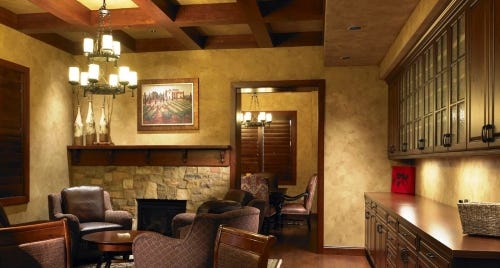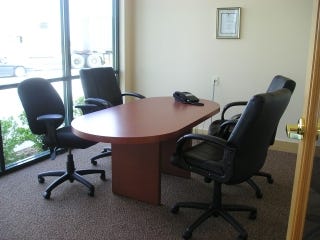Designing Self-Storage for Add-On Revenue: Configuring Your Space for Ancillary Products and Services
Today's self-storage design is unrecognizable compared to its simple origin of metal boxes with roll-up doors. Many self-storage operators have branched out from traditional storage-unit rentals and begun incorporating ancillary products and services to make their facility a one-stop shop for customers. Today's trends for facility design include options for add-on profit centers and additional revenue opportunities.
May 26, 2014
By Kay Miller Temple
Today's self-storage design is unrecognizable compared to its simple origin of metal boxes with roll-up doors. Many self-storage operators have branched out from traditional storage-unit rentals and begun incorporating ancillary products and services to make their facility a one-stop shop for customers. Today's trends for facility design include options for add-on profit centers and additional revenue opportunities.
Design Impacts Retail Revenue
Millions of marketing-research dollars have determined that when it comes to retail sales, keeping just the right amount of inventory in stock, in line and straight on shelves, moves more product, says Kevin Leebrick, manager for Advantage Self Storage in Indian Trail, N.C. He uses display details that show effort. “For example, I put boxes in stacks of five and rotate them by 45-degree angles,” he says. “That takes some time but makes for a more modern look, and a look that shows you care about the store.”
From a facility-design perspective, there are other things self-storage operators can do to inspire retail sales, and they don't necessarily require lots of real estate. “Space is a plus, but not a must," says Robert Vodraska, national account manager for Supply Source One, a division of Schwarz Supply Source and supplier of retail products to the storage industry.
 For example, operators can install LED screens in their retail area to punch up the look. “Go big or go home,” says Mathieu Seguin, director of operations for A1 Mini U-Stor-It in Ottawa, Canada. The facility’s 50-inch TVs provide a reasonably priced but tech-savvy look that displays dynamic messaging. Prices for boxes and other products are visible on screen and can be easily changed. “It looks streamlined, professional, and provides a point of motion that immediately engages customers as they walk in the door,” Seguin says.
For example, operators can install LED screens in their retail area to punch up the look. “Go big or go home,” says Mathieu Seguin, director of operations for A1 Mini U-Stor-It in Ottawa, Canada. The facility’s 50-inch TVs provide a reasonably priced but tech-savvy look that displays dynamic messaging. Prices for boxes and other products are visible on screen and can be easily changed. “It looks streamlined, professional, and provides a point of motion that immediately engages customers as they walk in the door,” Seguin says.
Rearranging the furniture can also improve office design. The retail area should be periodically reshuffled to add a new vibe, says Bruce Jordan, president of San Clemente, Calif.-based Jordan Architects Inc. “It should be clearly visible from the customer-service counter and designed so customers can circulate around and view the display.”
New trends in retail design also create an atmosphere that says “green,” with openness and great lighting, according to Nancy Wagner, marketing vice president of Chateau Products Inc., a supplier of retail products. Glazed concrete floors, sleek white surfaces, and corrugated, galvanized metal walls get the job done, she says. “Chrome fixtures on parchment walls create the green, friendly look.”
Design and Records Storage
With more and more companies pushing their business records off site to save on valuable office space, self-storage operators who accommodate records storage—either simplistically or via sophisticated services—will find a solid revenue stream. The records-storage model has evolved since its introduction to the self-storage industry, and operators have various options. Those who wish to provide more formal records-management services will find the design launch is a team sport.
“It takes the collective effort of knowledgeable professionals working together with the self-storage facility owners/managers to successfully transition from space rental to records storage,” says Karen Hall, owner of Archive Storage Solutions LLC based in southern California.
An important consideration to any records-storage design is security. Units should protect records from water, fire and rodents, says Cary F. McGovern, owner of Fileman and File Managers Inc. in the Greater New Orleans area. Operators should be mindful when choosing which units to allocate for records storage, he says. "It's always better to use the largest storage units or open space available for record storage."
Adding Ambiance to Wine Storage
When it comes to wine-storage design, facility operators should defer to the needs of their tenants. While some desire a club-like atmosphere in addition to environmental controls, others are merely looking for a safe place to store their bottles.
Customers looking for ambiance appreciate amenities such as ornate stonework and leather furnishings, says Patrick Gilroy, co-owner of Wine Storage Bellevue in Bellevue, Wash. The facility has enhanced its offerings by adding free Wi-Fi and a computer with access to cellar-tracking software. “The Amoroso Room is typically reserved for clients—and in some cases made available to the general public for a fee—where they can host private, wine-oriented functions such as a tasting or celebration event,” Gilroy says.

In contrast, other wine-storage customers are seeking storage that focuses on the elements of aging fine wines. Security is one of those fundamentals, says Bob Womack, facility manager and storage consultant for Allstate Self Storage in Phoenix. Appropriate lighting, optimal humidity and temperature, and minimal vibrations from noise and music complete the list. All these features can still be offered at a price 75 percent lower than club-oriented facilities, he adds. “Our experience has been with peace of mind about environmental conditions. Our renters get a great value at no extra cost.”
Boat- and RV-Storage Design Gets Sophisticated
One ongoing trend in the development of boat and RV storage is a condo-style design. “Typically, these units are larger and have more 'bells and whistles,' like motor-operated doors, individually metered electricity, more sophisticated security, and option upgrades like mezzanine systems,” says Angie Guerin, national sales manager for Mako Steel Inc., a Carlsbad, Calif., company that designs, supplies and installs steel buildings for the self-storage industry.
![Sentinel Boat and RV Storage in Sherwood, Ore., offers a combination of canopy and enclosed units for vehicle storage. [Photo courtesy of Mako Steel Inc.] Sentinel Boat and RV Storage in Sherwood, Ore., offers a combination of canopy and enclosed units for vehicle storage. [Photo courtesy of Mako Steel Inc.]](https://eu-images.contentstack.com/v3/assets/bltf0a690941f58b2e5/blt6d0c5a2ddac57967/65240dcf3219a2ab8f81b14b/b46e7e57079c44f5a3fb99c26ceee026.jpg?width=700&auto=webp&quality=80&disable=upscale)
However, even traditional RV-storage operators are adding more physical amenities. Nick Sheldon, owner of the new 17-acre Tucson RV Storage in Tucson, Ariz., says service designs such as dump stations, wash stations, and a good selection of pull-through or back-in space selections are still important.
The design elements for these self-storage add-on business models only touch on the limitless capacity for what the industry holds most dear—the creative, revenue-generating use of each square foot of space. Operators who’ve taken on the design challenge are enthusiastic about results.
 For example, the amenities designed into Magellan Storage in Torrance, Calif., are really paying off, says manager Keyana Yarber. The facility’s coffee bar, conference room and retail area offer customers everything they need. “The benefits from our unique design are in gaining long-term, loyal customers and an amazing relationship between the customer and staff,” she says.
For example, the amenities designed into Magellan Storage in Torrance, Calif., are really paying off, says manager Keyana Yarber. The facility’s coffee bar, conference room and retail area offer customers everything they need. “The benefits from our unique design are in gaining long-term, loyal customers and an amazing relationship between the customer and staff,” she says.
Kay Miller Temple is a physician and recent graduate from the master’s program at Arizona State University’s Walter Cronkite School of Journalism and Mass Communication. To reach her, e-mail [email protected].
You May Also Like





